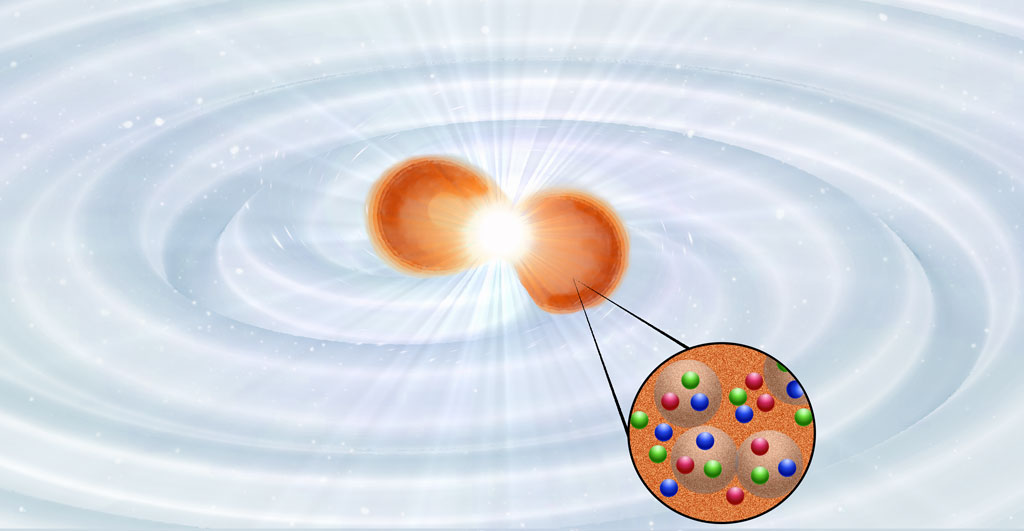Research has shown that increases the likelihood of finding clues about the age of the planet.
The United Nations research team, including the research team of Professor Tim Dietrich of the University of Potsdam, Germany, observed how two neutron stars collide and merge into one, thereby measuring the size of a neutron star and estimating the size of the universe. Derived. The related research results were published in Science on the 18th.

The history and size of the universe is a mystery that humanity has yet to solve ⓒ pixabay
The team first calculated the size of a typical neutron star. To track the physical processes involved in collisions between two neutron stars, scientists from Germany, the Netherlands, Sweden, France and the United States combined data from the collision with electromagnetic (AT2017gfo, GRB170817A) and gravitational wave signals (GW170817, GW190425). . “We combined observations and theoretical nuclear physics calculations to obtain astrophysical information about the state of matter under extreme conditions,” the research team explained.
In this analysis, the researchers concluded that the observed neutron star had a mass of 1.4 times that of the Sun at 90% confidence, and that the radius was about 11.75 km. This means that a massive mass heavier than the sun is condensed on the size of Manhattan, New York, USA. The two neutron stars rotate rapidly in a spiral, driven by each other’s gravitational forces, and then collide and merge into one. During the collision process, the two neutron stars emit light in the form of gamma rays, which can also be observed on Earth. From these data, the team was able to determine the mass and radius of a neutron star and also measured how far away from Earth.
In addition, the team calculated the Hubble constant, which represents the rate at which the universe expands. The Hubble constant is a proportional constant representing the relationship between the distance and the retreat velocity of an outer galaxy, and means the rate of expansion of the universe in space. The further the outer galaxy is from our galaxy, the faster it moves away. When a neutron star collides, most of the heavy elements in the periodic table are formed, so the emitted signals can be used to measure the expansion rate of the universe.
If the Hubble constant is accurately calculated, humans can know the age of the universe. Because the universe continues to expand, it is possible to determine how long it has expanded by using the reciprocal of the Hubble constant. However, there have been disagreements among scientists about the value of the Hubble constant. This is because different numbers came out depending on how the Hubble constant was calculated. Measurements based on cosmic background radiation yield a value of about 67 km/s/Mpc. This means that every 1 megaparsec (Mpc, 3.26 million light-years) away from Earth, it expands faster by 67 km per second.
On the other hand, the supernova-based analysis yields a much higher value of about 74 km/s/Mpc. In this case, every 326 light-years away from Earth, it expands faster at a rate of 74 km per second. If we calculate the age of the Earth from each value, the difference is hundreds of millions of years. Because of this, astronomical researchers have continually tried to account for the inconsistency of the Hubble constant values.

Schematic diagram of the collision of two neutron stars © Tim Dietrich
The value found by the Potsdam University research team through observation of neutron stars is about 66.2 km/s/Mpc, similar to the Hubble constant calculated through the measurement of cosmic background radiation. The results they derive can serve as evidence that the calculation through cosmic background radiation is accurate. At the same time, the Hubble constant calculated by the research team is the smallest value among the Hubble constants calculated so far. In other words, the universe is expanding at the slowest rate. It is also possible to explain that the Earth’s history may be older than what is now known.
Their work is based on a rapidly growing field in recent years, multi-messenger astronomy. Multi-signal astronomy is a research field that utilizes various types of signals, light, particles, and gravitational waves transmitted from space to Earth. Cosmic signals in the electromagnetic light spectrum include gamma rays, ultraviolet rays, visible and infrared rays, and radio waves, and particles include electrons, protons, neutrinos, and complex atomic nuclei.
While giving meaning to the new method of calculating the Hubble constant, the research team said, “Our study is not yet sufficient to prove which Hubble constant to exclude.”
(466)
